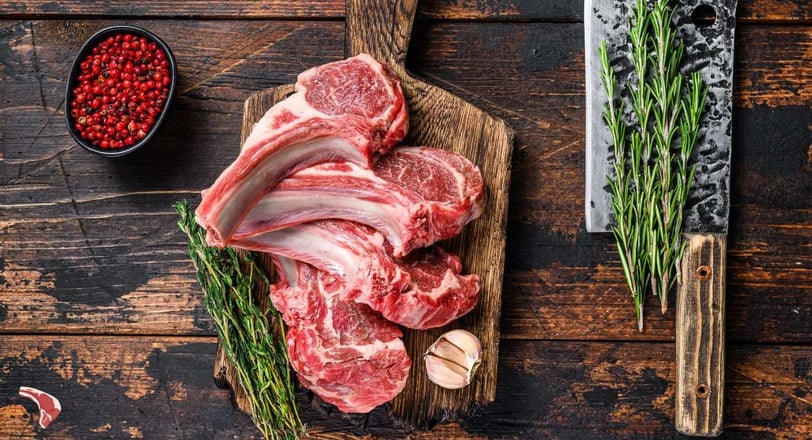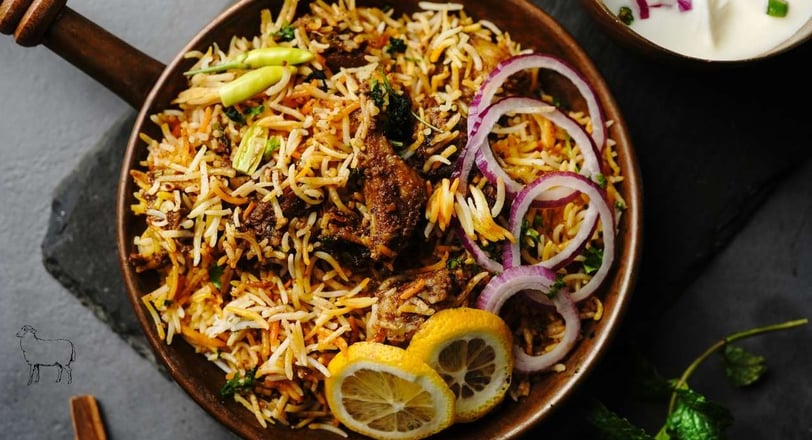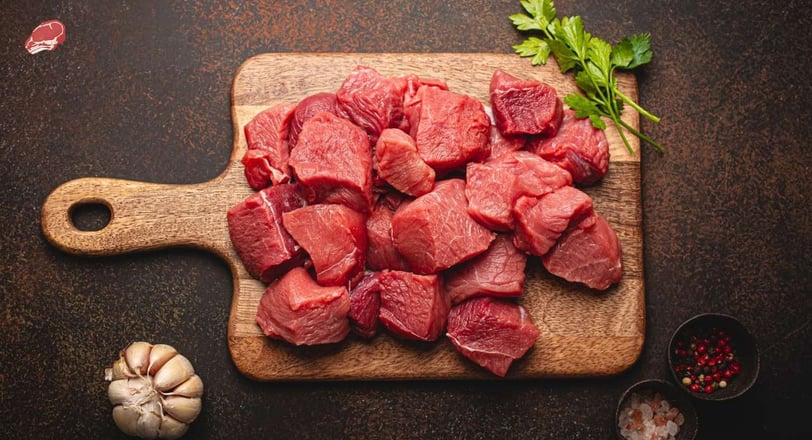If you’ve ever been curious about mutton, how it is different from lamb, or the many delicious dishes you can create with it, you’re in the right place. Today, I’ll walk you through everything you need to know about mutton. We’ll discuss the basics, explore its cuts, and even dive into some exciting recipes. Let’s get started!
What Is Mutton?
Mutton refers to the meat of a sheep that’s older than one year—ideally around three years old. Unlike lamb, mutton has a deep red color and a notable amount of fat. Its rich, bold flavor sets it apart, but if you’re new to it, it might take a little getting used to, especially if you’re more familiar with milder meats.
While mutton is a staple in many parts of the Middle East, Europe, and South Asia, it’s not as commonly consumed in the United States. Its distinct “gamey” flavor tends to appeal to those who enjoy other game meats like venison, wild boar, or rabbit.
Mutton vs Lamb: What’s the Difference?
Let’s clear up the confusion between mutton and lamb. Lamb comes from sheep that are less than a year old, making its meat tender with a mild flavor. It ranges in color from pale pink to light red and has very little fat.
Mutton, on the other hand, comes from older sheep, typically aged two years or more. It has a much stronger flavor, more marbling, and a firmer texture. The added fat content gives it a deeper depth of flavor, making it perfect for slow cooking methods like stewing or roasting.
In between these two is “hogget,” which refers to sheep aged one to two years. While not as commonly mentioned, hogget combines the tenderness of lamb with the robust flavor of mutton.
Cuts of Mutton
When you’re buying mutton, the cuts are similar to those of lamb. Each cut has its own unique characteristics and is best suited for specific cooking methods:
〰 Shank
The shank is the bottom part of the leg. Because this muscle is heavily used, it’s tougher and benefits from slow braising to become tender and flavorful.
〰 Leg
This is the back leg of the sheep, excluding the shank. A whole leg of mutton is ideal for roasting, while boneless options can be butterflied and stuffed for added flavor.
〰 Steak
These are cross-sections of the leg. Bone-in steaks have a small round bone in the center, while boneless options are easy to grill.
〰 Rack
The rack is similar to the prime rib of beef. When cut into individual pieces, they make “mutton chops,” which are perfect for grilling or pan-searing.
〰 Loin Chops
These are like the T-bone steaks of the sheep, with the loin on one side of the bone and the tenderloin on the other. They’re tender and flavorful.
〰 Shoulder Chops
Taken from the shoulder, these cuts are tender and more affordable than loin chops. They work beautifully in curries or slow-cooked dishes.
Mutton Chops


Mutton chops are a crowd favorite! They’re juicy, flavorful, and easy to prepare. Here’s a simple recipe to try at home:
Ingredients
Mutton Chops: Rib, loin, or shoulder cuts work best.
Spices: Red chili powder, turmeric, coriander powder, garam masala.
Yogurt: Thick, plain yogurt (Greek yogurt is ideal).
Ginger-Garlic Paste: Essential for flavor.
Oil and Vinegar: Keeps the meat moist and tender.
Onions: Finely chopped for added sweetness.
Mutton Chops Recipe
〰 Tenderize the Chops: Slow-cook the mutton chops with onions, ginger, garlic, and some water. Let it simmer for about 45 minutes until tender.
〰 Marinate the Chops: Mix yogurt with spices and a splash of oil. Coat the cooked chops with this marinade and let them sit for at least 30 minutes.
〰 Roast the Chops: Preheat your oven to 350°F. Arrange the chops on a baking tray, drizzle any remaining marinade on top, and roast for 30 minutes. For a charred finish, broil them for an additional 10 minutes.
Mutton Biryani


Mutton biryani is a true celebration of flavors. This dish combines tender mutton, aromatic basmati rice, and a rich blend of spices to create a meal that’s fit for royalty.
Ingredients
Mutton: Use cuts from the shoulder or leg for the best results.
Rice: Basmati or sela rice works best for biryani.
Spices: A mix of cardamom, cinnamon, cloves, and saffron gives biryani its signature aroma.
Yogurt and Tomatoes: Add richness and balance to the dish.
Mutton Biryani Recipe
〰 Prepare the Mutton: Marinate the meat with yogurt, garlic, ginger, and biryani spices for at least two hours.
〰 Cook the Rice: Parboil the rice with whole spices like cloves and cinnamon. Drain and set aside.
〰 Layer and Cook: In a large pot, layer the mutton, rice, and fried onions. Drizzle with saffron-infused milk and cook on low heat to let the flavors meld together.
Mutton Fish (Mutton Snapper)


Did you know there’s a fish called mutton snapper? This saltwater fish is prized for its mild, sweet flavor and is a favorite among seafood lovers. Its olive-toned body and distinctive blue lines make it easy to identify.
Ingredients
2 mutton snapper fillets
Coconut oil for searing
Lettuce, cucumber, celery, and avocado for the salad
Lime juice, olive oil, and basil for the dressing
Mutton Snapper Recipe
〰 Season the fillets with your favorite spices.
〰 Heat a skillet with coconut oil and sear the fish for 2–3 minutes on each side.
〰 Toss the salad ingredients with the dressing and serve with the fish on top.
Conclusion
Whether you’re savoring juicy mutton chops, enjoying the lightness of mutton fish, or indulging in a hearty plate of mutton biryani, this versatile meat has something for everyone. Don’t shy away from trying mutton in your cooking—it’s a rich, flavorful experience you won’t forget.




